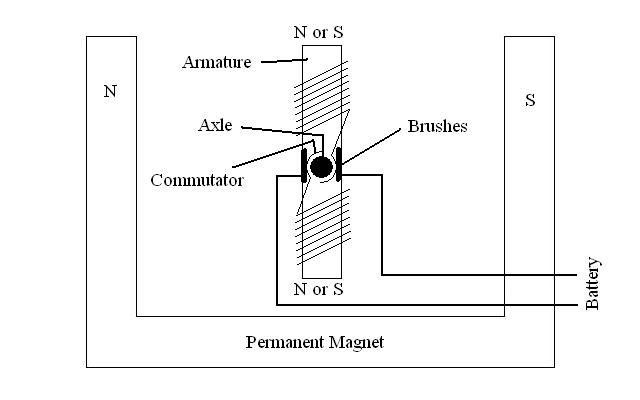DC Motor
Motors are found everywhere on everything. Try counting all the electric motors you see in a day and I think at the end of the day you will have counted quite high. There are two main types of motors: AC motors and DC motors. AC and DC stand for Alternating Current and Direct Current respectively. (See AC vs. DC). Now let's talk about how a Direct Current motor works.
First there is a big permanent magnet with a magnetic field between the north and south ends of the magnet. In this magnetic field there is an armature with wire wound around it. As current passes through this wire it causes a magnetic field and the armature develops a north and south. The armature is mounted on an axle that can spin and thus tries to orient itself with the magnetic field created by the permanent magnet which surrounds the armature. One type of DC motor has brushes which complete the electric circuit over 180 degrees of the armatures 360 degree rotation. After 180 degrees of rotation one brush loses contact and the other gains contact which reverses the effective direction of the current and the north and south ends of the armature. The armature will then be forced to rotate 180 degrees to be realigned with the magnetic field created by the permanent magnet.<ref> http://electronics.howstuffworks.com/motor1.htm </ref>
This process is what causes the motor to spin. The system is called DC because the direction of the current is reversed by mechanical means (the brushes) and the electric source produces current that travels the same direction the whole time.
 <ref> http://electronics.howstuffworks.com/motor1.htm </ref>
<ref> http://electronics.howstuffworks.com/motor1.htm </ref>
References
<references/>